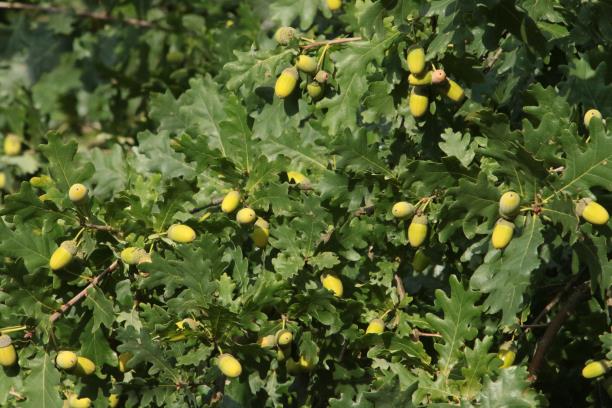|
Each month we will be featuring a species of tree found on Parkwood Springs. Visit our tree of the month page for further details here. There are two native oaks that we will be highlighting this month, Pedunculate and Sessile Oak. English oak can live for hundreds of years and support an incredible 2,300 species of wildlife, including birds, bees, wasps, butterflies, and mammals.
Mast years. The amount of fruits and seeds on some plants and bushes can vary enormously from year to year. Some of this is down to weather but it is likely to be more interesting than that. A heavy crop on trees like Oak and Beech is called a ‘mast year’ and occurs every few years. Producing a lot of seeds uses a great deal of energy and reduces the amount the tree can grow that year. It is thought that the trees have evolved to maximise seed production some years, to ensure new seedlings germinate and the species spreads, while producing less other years, so maximising the energy put into the existing tree’s growth and strength whilst also limiting the populations of their predators. For the Oak, Jays, mice and Squirrels are among the main common species that feed on the Acorns. There is much we still have to find out about the subtle evolutionary strategies of even our best known species.
Oak Galls There are about 50 tiny wasps whose eggs and larvae create galls (abnormal growths) on our native Oaks. The wasps are non-stinging and mostly tiny, looking more like flies. Here are some of the most common:
Sessile Oak
0 Comments
Leave a Reply. |
|
About us |
Resources |
|














